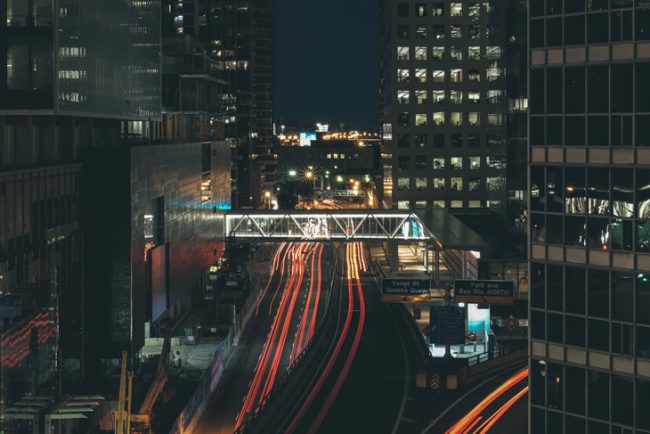Sleep to living organism in general and to human in particular has always been a topic of discussion for its essence, mode and importance. A good sleep always makes a person afresh. A well-known old proverb highlighting the extreme consequences of four traits of human life viz., sleep, hunger, age and love saying that, “Niind Na Mange Bistra, Bukh Na Mange Manns, Maout Ne Bekhe Ummar, Issak Na Bekhe Jaat” means “sleep does not ask even for a Bed ,Hunger does not ask meat, Death does not see age and love does not bother aboutcaste”.In case of sleep, this was true to its true spirit with our old generations who were very hardworking and always go to bed when they feel highly sleepy. Body after a lot of hard work really does not need any cosy environment for sleep and not only sleep but sound sleep always comes automatically anytime and everywhere. Things have changed with time, and present generation due to their changed life style from mechanical to electrical and electro-mechanical is continuously shunning away not only from hard work but also from any physical exercise like yoga and pranayama, thus, finding it difficult to have sleep as well as sound sleep. People of present day are highly engrossed in the use of electronic media to pass their time and also making most of the use of technology to make their life easy going. Under these circumstances, the most important character of human life system i.e., sleep is being getting disturbed (sleep disorder) and people are feeling its consequences as a result of their bad physical as well as mental health conditions.
Light therapy
Light therapy has been in use to treat can be used for circadian rhythm sleep disorders, such as sleep onset insomnia. That’s when we have trouble falling asleep at a normal time, but no problem staying asleep which could be due to advanced or delayed circadian rhythms. In this case, light therapy can help reset an “early bird” internal clock in the early evening hours. Light therapy has also been used for: jet lag, adjusting to a night work schedule, seasonal affective disorder (SAD), depression and dementia. Light therapy is not generally recommended for sleep disorders which are not related to abnormal circadian rhythms. Depending on the type of circadian rhythm disruption, light therapy is either done in the morning, soon after waking up, or in the early evening hours, before to start feeling drowsy. Light therapy is generally safe, though some people have minor side effects, such as: eyestrain, headache, nausea and irritability. These side effects usually don’t last long. Here are some more tips which can be followed to have an improved sleep.
- Eliminate blue light from your sleep environment.
- It is necessary to avoid the use of all type of electronic devices before one hour to sleep time. It is also better to put these devices in a place where they won’t disturb you.
- Stick to a regular sleep schedule that means to go to bed around the same time each night and get up around the same time every morning.
- It is advisable to avoid day time short nap, especially in the latter half of the day.
- To do regular exercise daily but avoid them within an hour of bed time.
- Keep your bedroom cool, dark, and quiet.
- Limit caffeine to the morning hours.
- Avoiding alcohol and nicotine within several hours of going to bed will be helpful to get a sound sleep.
Sleep-friendlier lighting
To avoid to have trouble falling asleep, it is always advised to stop the use of all type of the electronic gadgets at least one hour before going to bed. But due to growing dependence and obsession of electronic gadgets as well as with the changed easy life style, getting sound sleep has been a big dream of present generation and different methods or tricks are being advocated by people working in the area of sleep disorder like use of teas, pills, creams, apps, music therapy, reciting of hymn, counting (or reverse counting) of numbers of sheep at the time of going to sleep. The working of these tricks or methods is not questionable but scientists and engineers are further looking towards the development of other effective methods to make sleep or sound sleep to human a natural consequence of these techniques. In this direction, scientists and engineers have come out with the development sleep-friendlier lighting systems with which people can get sleep. These lighting systems can lessen the bedtime spent to get a sleep. Most modern electronic display screens and home lighting systems are making use of blue light-emitting diode (LED). They are energy efficient, long-lasting and cost little. It is found that the blue light from electronic device screens and even common lamps will confuse the brain’s internal 24-hour clock. Even “white” light contains these blue wavelengths. And when blue light enters the eyes, the brain gets the message that it needs to stay awake. But a new type of lighting appears to get around these sleep-challenging effects so we can get sleep easily at bedtime. The developers are hopeful that the new light emitting diode (LED) might someday deliver the glow in lamps and other types of home lighting along with its possible use in TV, laptop and smartphone screens. Light shines through the lens of an LED which is usually a plastic bulb having behind the scenes an LED chip, which has small LEDs attached to a printed circuit board. The chip coated with powdered phosphors makes the colour of the light shining through the lens to change. The team was able to create a new phosphor to make their LED shine with a warm white light. Here, the warm means the light that contains less of the short of blue wavelengths that generally mess with sleep. Those same blue wavelengths are found in sunlight and they tell our internal body clock that it’s time to be awake and normally that body clock winds down as daylight fades. Melatonin is a hormone produced at night which helps to bring on sleep- unless blue light tells our body otherwise. Blue light suppresses the melatonin hormone and our bodies may well get confused if it’s late and our eyes remain bathed in blue light from electronic or lighting devices. Even though our body craves sleep, it’s still getting that signal for wakefulness.
Eliminating the blue light
Light emitting diodes create white light by mixing red, green and blue hues and the white light shining out of an LED comes from the bulb colour plus the colours of the phosphors used to coat the LED. A new violet LED, uses red, green and blue-emitting phosphors to combine the colours of the visible spectrum and create white light. To reduce the blue emissions from LED, the chemists first altered a white powdered crystal that didn’t glow on its own by adding a bright silver-coloured element to the powder’s structure. This europium turns the crystal into a phosphor. Europium (a soft silvery metal) is often added to lighting phosphors because it helps to boost the blue part of a LED’s glow. Researchers have mixed the blue phosphor with red and green ones to create white light and added this combination to a modified violet LED. A mixture of the new blue phosphor combined with red- and green-emitting phosphors, the combination can produce a warm white light when lit by a violet LED. Compared to a standard violet LED, this new one emits far less intense blue light. This made a true and high-quality blue good for use and can combine with other colours to make white light. The team has tested the new phosphor to make sure it produces white light as well as do not break down easily. They exposed it to heat and water. They found that not only did the new phosphors continue to glow at the same intensity, but its colour also remained steady and with all of these properties at once makes the new phosphors superior to many other phosphors.



